சுவாமி விவேகானந்தர்
கட்டற்ற கலைக்களஞ்சியமான விக்கிப்பீடியாவில் இருந்து.
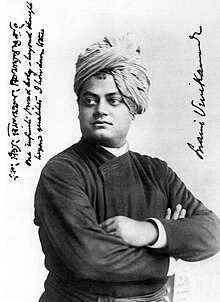
| சுவாமி விவேகானந்தர் Swami Vivekananda | |
|---|---|
சிக்காகோவில் சுவாமி விவேகானந்தர், 1893 இப்படத்தில் சுவாமிகள் வங்காளம், மற்றும்ஆங்கில மொழிகளில் எழுதியது: “One infinite pure and holy—beyond thought beyond qualities I bow down to thee” - Swami Vivekananda | |
| பிறப்பு | சனவரி 12, 1863 கல்கத்தா, மேற்கு வங்கம், |
| இறப்பு | சூலை 4 1902 (அகவை 39) பேலூர், கல்கத்தா, |
சுவாமி விவேகானந்தர் (Swami Vivekananda, சனவரி 12, 1863 - சூலை 4 1902)பத்தொன்பதாம் நூற்றாண்டின் இந்தியாவின் தலைசிறந்த சமயத் தலைவர்களுள் ஒருவராவார். இவரது இயற்பெயர் நரேந்திரநாத் தத்தா(Narendranath Dutta). இராமகிருஷ்ண பரமஹம்சரின் சீடரான இவரின் கருத்துக்கள் இளைஞர்களை எழுச்சியடையச் செய்வனவாக அமைந்துள்ளன. இவர் இந்தியாவிலும் மேலைநாடுகளிலும் அத்வைதவேதாந்த தத்துவங்களை அடிப்படையாகக் கொண்ட பல சொற்பொழிவுகளை ஆற்றியுள்ளார். 1893 ஆம் ஆண்டு அவர் சிகாகோவில்உலகச் சமயங்களின் பாராளுமன்றத்தில் நிகழ்த்திய சொற்பொழிவுகள்உலகப்புகழ் பெற்றது.
பொருளடக்கம்
[மறை]வாழ்க்கை
பிறப்பும் இளமையும்
விவேகானந்தர் 1863 ஜனவரி 12ஆம் நாள் கல்கத்தாவில் விசுவநாத் தத்தாவுக்கும் புவனேஸ்வரி தேவிக்கும் மகனாகப் பிறந்தார். தாய் மொழி வங்காளம். சிறு வயதிலேயே மிகுந்த நினைவாற்றல் கொண்டவராகவும் சிறந்த விளையாட்டு வீரராகவும் திகழ்ந்தார். இசையும், இசை வாத்தியங்களும் பயின்றார். இள வயது முதலே தியானம்பழகினார். பகுத்தறிவாளராகவும் திகழ்ந்தார்.
பள்ளிப்படிப்பு முடிந்தவுடன் 1879 ஆம் ஆண்டு கல்கத்தாவில் உள்ள மாநிலக் கல்லூரியில் (Presidency College) சேர்ந்தார். பின்னர் ஸ்காட்டிஷ் சர்ச்சு கல்லூரியில் (Scottish Church College) தத்துவம் பயின்றார். அங்கே மேல்நாட்டு தத்துவங்கள், மற்றும் ஐரோப்பிய நாடுகளின் வரலாறு முதலியவற்றை படித்தறிந்தார். இச்சமயத்தில் அவர் மனதில் இறை உண்மைகளைப் பற்றி பல கேள்விகளும் சந்தேகங்களும் எழுந்தன. இறைவனைப் பலர் வழிபடுவதும், உலகின் வேறுபாடுகளும் ஏற்றத்தாழ்வுகளும் நிறைந்துள்ளதும் அவருக்கு முரண்பாடாக தோன்றியது. இது பற்றி பல பெரியோர்களிடம் விவாதித்தார்; மேலும், அக்காலகட்டத்தில் பிரபலமாயிருந்தபிரம்ம சமாஜத்தில் உறுப்பினரானார். ஆனால் இம்முயற்சிகள் யாவும் அவர் கேள்விகளுக்கு தகுந்த விடையளிக்க முடியவில்லை.
இராமகிருஷ்ணருடன்
இறை உண்மைகளைப் பற்றி அறிந்து கொள்வதற்காக, இராமகிருஷ்ணரைப் பற்றி கேள்விப்பட்டு அவரிடம் சென்றார் விவேகானந்தர். இராமகிருஷ்ணரை முதன் முதலாக விவேகானந்தர் சந்தித்த ஆண்டு 1881. எதையும் பகுத்தறிந்து ஏற்றுக் கொள்ளும் விவேகானந்தரால் முதலில் இராமகிருஷ்ணரின் இறைவனைப் பற்றிய கருத்துக்களை முழுமையாக ஏற்றுக்கொள்ள முடியவில்லை. இறைவழிபாட்டையும் உடனடியாக ஏற்றுக்கொள்ளவில்லை. இராமகிருஷ்ணரின் போதனைகள், உருவ வழிபாடு, அல்லது அருவ வழிபாடு என்று ஒரே தனி வழியினை போதிக்காமல், இரண்டு வழிகளிலும் இருக்கும் உண்மையை உணர்த்துவதாக இருந்தன. இராமகிருஷ்ணரின் ஈடுபாட்டால், விவேகானந்தரால், பக்தி மார்க்கம், மற்றும் ஞான மார்க்கம், இரண்டின் அவசியத்தினையும் புரிந்து கொள்ள முடிந்தது.
துறவறம்
1886 ஆம் ஆண்டு இராமகிருஷ்ணர் இறந்த பின் விவேகானந்தரும் இராமகிருஷ்ணரின் மற்ற முதன்மை சீடர்களும் துறவிகளாயினர். பின்னர் நான்கு ஆண்டுகள் இந்தியத் துணைக்கண்டம் முழுவதும் சுற்றினார் விவேகானந்தர். தன்னுடைய இந்த பயணங்கள் மூலம் இந்தியாவிலுள்ள அனைத்து பகுதிகளின் கலாச்சாரம், பண்பாடு, வாழ்க்கை நிலை போன்றவற்றை அனுபவித்து அறிந்தார் விவேகானந்தர். அச்சமயத்தில் இந்திய மக்களின் வாழ்க்கை நிலை மிகவும் கீழானதாக இருந்தது. மேலும், அது இந்தியர் ஆங்கிலேயரிடம்அடிமைப்படிருந்த காலமாகும். தன் பயண முடிவில் 24 டிசம்பர் 1892 இல் கன்னியாகுமரி சென்ற விவேகானந்தர் அங்கே கடல் நடுவில் அமைந்த ஒரு பாறை மீது மூன்று நாட்கள் தியானம் செய்தார். அந்த மூன்று நாட்கள் இந்தியாவின் கடந்த காலம், நிகழ்காலம், மற்றும் எதிர்காலம் குறித்து தியானம் செய்ததாக பின்னர் அவர் குறிப்பிட்டுள்ளார். இன்றும் அந்தப் பாறை விவேகானந்தர் நினைவிடமாக பராமரிக்கப் பட்டு வருகிறது.
மேலைநாடுகளில்
| விக்கிமூலத்தில் பின்வரும் தலைப்பிலான எழுத்தாக்கம் உள்ளது: |
கன்னியாகுமரியில் இருந்து சென்னை வந்த விவேகானந்தரிடம், அமெரிக்காவின் 1893ஆம் ஆண்டு உலக சமய மாநாட்டில் இந்து மதம் சார்பாக கலந்து கொள்ளுமாறு சென்னை நகர இளைஞர்கள் வேண்டுகோள் விடுத்தனர். அதை ஏற்றுக்கொண்ட விவேகானந்தர் அமெரிக்காபயணமானார். சிகாகோவின் உலகச் சமய மாநாட்டில் அவர் ஆற்றிய சொற்பொழிவுகளுக்கு அந்நாட்டில் பெரும் வரவேற்பு கிடைத்தது. மேலும் சில ஆண்டுகள் மேலைநாடுகளில் தங்கி பல சொற்பொழிவுகள் ஆற்றிவேதாந்த கருத்துக்களை அவர்களிடம் அறிமுகப் படுத்தினார். நியூயார்க், மற்றும் லண்டன் நகரங்களில் வேதாந்த மையங்களை நிறுவினார்.
இந்தியா திரும்புதல்
1897 ஆம் ஆண்டு இந்தியா திரும்பியவுடன் கொழும்பு முதல் கல்கத்தா வரை அவர் ஆற்றிய பேச்சுக்கள், அப்போது கீழ்நிலையில் இருந்த இந்தியரை விழிப்புறச் செய்வதாகவும், இளைஞர்கள் தம்முள் இருந்த ஆற்றல்களை உணரும்படிச் செய்வதாகவும் அமைந்ததாக கருதப்படுகிறது. உலக அரங்கில் இந்து மதத்தின் புகழைத் தன் சொற்பொழிவால் நிலைநிறுத்திய விவேகானந்தர், அமெரிக்கப் பயணத்தை முடித்து விட்டு இலங்கை மார்க்கமாக 26.01.1897 அன்று பாம்பன் குந்துகால் பகுதியில் வந்திறங்கினார். பாம்பனில் மிகச் சிறப்பான வரவேற்பை அளித்தார் அன்றைய ராமநாதபுரம் சமஸ்தான மன்னர் பாஸ்கர சேதுபதி.
கல்கத்தாவில் இராமகிருசுண இயக்கம் மற்றும் மடத்தை நிறுவினார் விவேகானந்தர். 1899 சனவரி முதல் 1900 டிசம்பர் வரை இரண்டாம் முறையாக மேல்நாட்டுப் பயணம் மேற்கொண்டார்.
மறைவு
1902 ஆம் ஆண்டு ஜூலை 4 ஆம் நாள், தனது 39ஆம் வயதில் பேலூரில் விவேகானந்தர் காலமானார். அன்று அவர் நிறுவிய இராமகிருஷ்ண மிஷன் மற்றும் மடம் இன்று உலகம் முழுவதும் கிளைகள் பரவி செயல்பட்டு வருகிறது.
விவேகானந்தரின் கருத்துக்கள்
மனிதர் இயல்பில் தெய்வீகமானவர்கள் என்பதையும், இந்த தெய்வீகத்தை வெளிப்படுத்தவதே மனித வாழ்வின் சாரம் என்பதையும் அவர் தன் அனைத்து சொற்பொழிவுகளிலும், எழுத்துக்களிலும் வலியுறுத்துவதைக் காணலாம். காடுகளிலும், மலைகளிலும் வசிக்கும் ரிஷிகளிடமும், சமூகத்தில் ஒரு பிரிவினரிடமும் மட்டுமே குழுமியிருந்த ஆன்மீகம், சமூகத்தில் இருந்த அனைவரிடமும் பரவ வேண்டும் என அவர் விரும்பினார். வேதாந்த கருத்துக்களை பின்பற்றி செயலாற்றும் ஒருவர், சமூகத்தில் எந்தப் பணியைச் செய்தாலும் அதை சிறப்பாக செய்யமுடியும் என்பது அவர் கருத்து. மக்கள் சேவையே மகேசன் சேவை என்ற கொள்கையின் அடிப்படையிலேயே அவர் ராமகிருஷ்ண மடத்தை நிறுவினார்.
விவேகானந்தரின் பொன்மொழிகள்
- கடவுள் இருந்தால் அவனை நாம் காணவேண்டும், ஆத்மா இருந்தால் அதனை நாம் உணர வேண்டும், அப்படியில்லையென்றால் நம்பிக்கை இல்லாமல் இருப்பது நன்று. பாசாங்கு போடுவதை விட நாத்திகனாக இருப்பதே மேல்[1].
- உலகின் குறைகளை பற்றி பேசாதே. குறைகளை நோக்கி வருத்தப்படு, எங்கும் நீ குறைகளை காண்பாய். ஆனால், நீ உலகுக்கு உதவி செய்ய விருப்பினால் உலகை தூற்றாதே, குறை சொல்லாதே. குறை சொல்லி உலகை இன்னும் பலவீனப்படுத்தாதே. உலகின் குறைகள், குற்றங்கள் எல்லாம் அதன் பலவீனத்தால் விளைபவை அல்லவா[2].
- செயல் நன்று, சிந்தித்து செயலாற்றுவதே நன்று. உனது மனதை உயர்ந்த இலட்சியங்களாலும், சிந்தனைகளாலும் நிரப்பு. அவற்றை ஒவ்வொரு நாளின் பகலிலும் இரவிலும் உன் முன் நிறுத்து; அதிலிருந்து நல் செயல்கள் விளையும்[2].
- வாழ்வும் சாவும், நன்மையும் தீமையும், அறிவும் அறியாமையும் ஆகியவற்றின் கலவைதான் மாயா, அல்லது பிரபஞ்சத்தின் இயல்பு. இவ் மாய்த்துள் நீ எல்லையற்று மகிழ்ச்சிக்காக அலையலாம், ஆனால் நீ தீமையையும் காண்பாய். தீமையின்றி நன்மை இருக்குமென்பது சிறுபிள்ளைத்தனம்[2].
- உலகில் உள்ள தீமைகளைப் பற்றியே நாம் வருந்துகிறோம். நம் உள்ளத்தில் எழும் நச்சுஎண்ணங்களைப் பற்றி சிறிதும் கவலை கொள்வதில்லை. உள்ளத்தை ஒழுங்குபடுத்தினால் இந்த உலகமே ஒழுங்காகிவிடும்.
- சுயநலமின்மை, சுயநலம் என்பவற்றைத் தவிர, கடவுளுக்கும் சாத்தானுக்கும் எவ்வித வேறுபாடும் இல்லை.
- எப்போதும் பொறாமையை விலக்குங்கள். இதுவரையிலும் நீங்கள் செய்யாத மகத்தான காரியங்களை எல்லாம் செய்து முடிப்பீர்கள்.
- நமது நாடு வீரர்களை வேண்டி நிற்கிறது. வீரர்களாகத் திகழுங்கள்!
- இளைஞர்களே, தேச முன்னேற்றம் என்னும் தேர்ச் சக்கரத்தைக் கிளப்புவதற்கு உங்கள் தோள்களைக் கொடுங்கள்.
- இளைஞர்களே உங்களுக்கு என்னிடம் நம்பிக்கை இருக்குமானால் என்னை நம்புவதற்குரிய தைரியம் இருக்குமானால் ஒளிமயமான எதிர்காலம் உங்களுக்குக் காத்திருக்கிறது என்பேன்.
- வலிமையே மகிழ்ச்சிகரமான நிரந்தரமான வளமான அமரத்துவமான வாழ்க்கை ஆகும்.
- சுயநலம் என்பதை அறவே தூர எறிந்துவிட்டு வேலை செய்யுங்கள்.
- என் குழந்தைகளான நீங்கள் என்னைவிட நூறு மடங்கு சிறந்தவர்களாக இருக்க வேண்டும் என்று நான் விரும்புகிறேன்.
- நீ எதை நினைக்கிறாயோ அதுவாக ஆகிறாய்
உன்னை வலிமை உடையவன் என்று நினைத்தால் வலிமை படைத்தவன் ஆவாய்! - நான் இப்போது இருக்கும் நிலைக்கு நானே பொறுப்பு
அவரது கவிதைகள்
கடவுளைத் தேடி... எனும் தலைப்பில் வங்க மொழியில் கவிதைகளை எழுதியுள்ளார். அதுபற்றி வெகு சிலருக்கேத் தெரியும். அதனைத் தமிழிலும் மொழிபெயர்த்துள்ளனர். அவற்றினை திருமதி.சௌந்திரா கைலாசம் என்பவர் தமிழில் மொழிபெயர்த்துள்ளார். மீராபாய், கபீர்தாசு ஆழ்வார்கள், நாயன்மார்கள் போன்றவரின் கவியில் உள்ள ஆழம், இவற்றிலும் உண்டு.
எடுத்துக்காட்டாக..
அனைத்தும் ஆகி அன்பாகி
அமைபவன் அவனே அவன்தாளில்
உனதுளம் ஆன்மா உடல் எல்லாம்
உடனே தருக என் நண்பா
இவைகள் யாவும் உன்முன்னே
இருக்கும் அவனின் வடிவங்கள்
இவைகளை விடுத்து வேறெங்கே
இறைவனைத் தேடுகின்றாய் நீ
மனத்தில் வேற்றுமை இல்லாமல்
மண்ணுல கதனில் இருக்கின்ற
அனைத்தையும் நேசித் திடும் ஒருவன்
ஆண்டவனை அவனைத் தொழுபவனாம்
--விவேகானந்தர்
நூல்கள்
விவேகானந்தர் ஆற்றிய சொற்பொழிவுகள், அவர் எழுத்துக்கள், கடிதங்கள், பேச்சுக்கள், பேட்டிகள் முதலியன The complete works of Swami Vivekananda என்ற பெயரில் தொகுக்கப்பட்டுள்ளன. இத்தொகுப்பு தமிழ் மொழியிலும்விவேகானந்தரின் ஞான தீபம் என்ற பெயரில் மொழிபெயர்க்கப்பட்டு வெளிவந்துள்ளது
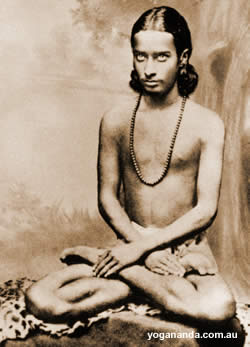
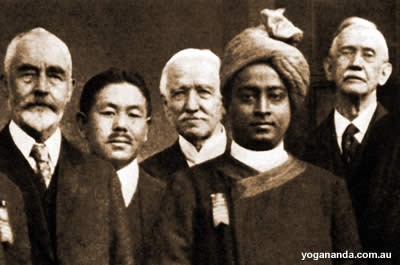
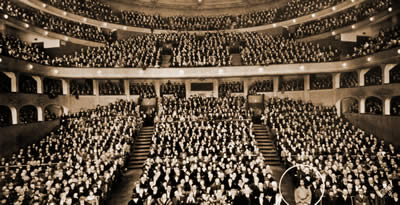
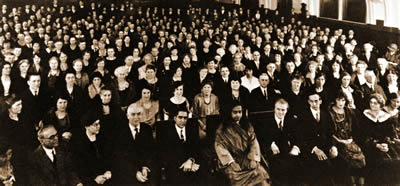
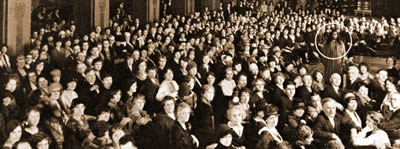
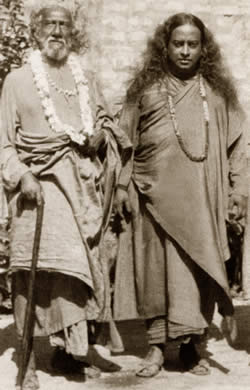
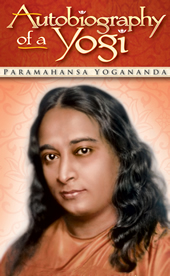
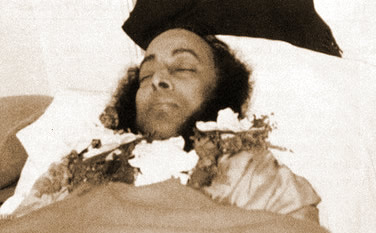
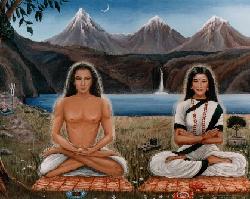

.jpg)
.jpg)
.jpg)









